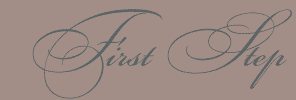
|
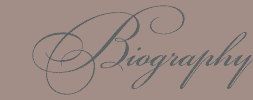
|

|
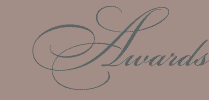
|

|

|
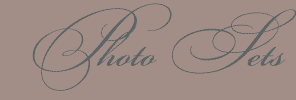
|
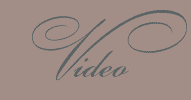
|
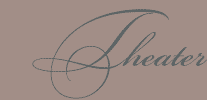
|

|

|

|

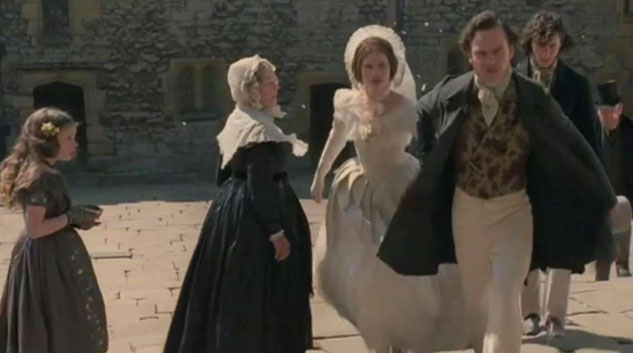
Michael O'Connor's Sumptuous Period Costumes in Jane Eyre...
Before leaving prestige season fully behind, there's one last morsel of costume-finery fun to check out: Cary Fukunaga's Jane Eyre. Fukunaga broke onto the scene with gritty gang tale Sin Nombre, so adapting Charlotte Bronte's classic Victorian novel is both an interesting follow-up and a challenge, considering how many film versions of the book are out there. Fortunately, Fukunaga succeeds entirely in crafting a thrilling love story that looks both classic and refined while feeling fresh and relevant. This comes thanks in no small part to its two talented young stars, Mia Wasikowska and film-critic hunk Michael Fassbender. Even though the two are far from the homely shut-ins Bronte originally described, the sheer force of their acting and chemistry brings this classic romance to vivid life.
But an essential element to a great costume drama is obviously great costumes, and Jane Eyre's costume designer Michael O'Connor hits the bulls-eye with creations that don't distract from the story, but nonetheless leave you with an urge to buy a cravat/frock-coat combo.
After winning an Oscar for The Duchess, O'Connor has quickly become a new go-to-guy for great period garb. He told Little Gold Men that Fukunaga's approach to keeping an oft-told tale as fresh as possible was to go for utter authenticity: "There's different versions [of Jane Eyre], but you can always tell the period [the movie] was made from hairstyles and such. We wanted to go back to the real thing, and set it really when we thought it was written—especially with the cottons, textiles, and textures we used. They're all based on real designs of the time."
Fortunately for O'Connor, there was no shortage of reference materials. He researched all the children's clothing at a children's museum in London, and he even found an American Web site that had block prints of original 19th-century patterns, which he ended up using to make Jane Eyre's final dress—topping it with a shawl original to the time and a bonnet made of straw from the period.
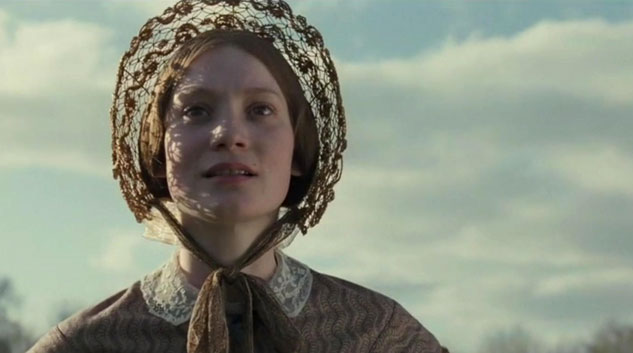
"The lining, the buttons, the stitching, everything was totally researched. I always say, 'Is there a reference for that, is that something they did?' And if people say [they] don't know, then I say we can't do it—there's so much information from that time that there's no excuse not to have it."
Does he ever fee; tempted to slip in an out-of-context piece for dramatic effect? "It's tempting, but there's no need. The truth is interesting enough. Jane is a sort of plain character, but that doesn't mean she's unstylish. She's wearing shades of gray with white collars,

and she can still look quite smart or quite nice and serviceable—not overly fussy." O'Connor found his fun in tweaking the shades of gray and white collars—subtle differences that you can see in these images. Although Jane Eyre appears to be wearing the same governess uniform over and over, the collar and shades of gray are changing slightly depending on her mood. This thinking extended to O'Connor's one great opportunity to have fun with Jane's sartorial choices: her wedding dress. "The thing was to make it simple. Rochester is always trying to buy her things, which she rejects because that's her character. So [the aim] was to make it a simple dress, and shorten the length. Jane's a country girl, it's a country dress, and it's fitted and tight-sleeved, rather like her day dresses, like her character."
For Rochester, O'Connor took a functional approach: "For any character — Jane, or Rochester — you've got to think what they sleep in, when they wake up, what's the natural thing for them to do, what do they put on first. It's about being real and functional. In rural times, most of the time they stayed in riding clothes, especially Rochester, because they're always out on the grounds," he says.
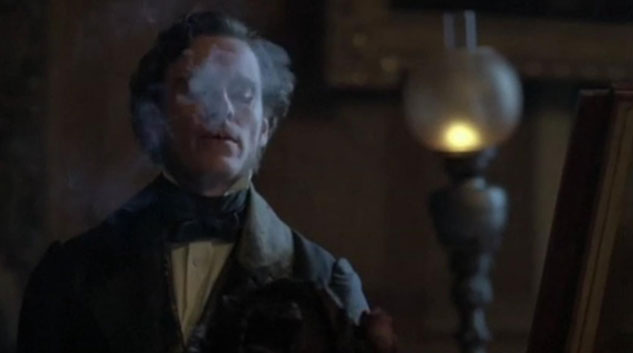
O'Connor's aim for authenticity even extended to something the camera will never see: underwear. He explained that in Victorian times, men went commando; instead of wearing boxers, they had long shirts whose excess length (down to the knee) functioned as underwear. Even though you don't always see it, this clothing quirk had a real effect that O’Connor needed to replicate: "When the shirt's pushed into the trousers, it creates that smooth shape. If you don't do that, you never make the trousers fit, and people would spend time wondering why it didn't quite look the way it should." Rochester's one piece of real flair was his cravat, which O'Connor said Fukunaga was eager to display: "Cary was very keen on those; he'd send reference pictures he'd found.

It's very important for men — that's the only way they get to show those things, the silk around their neck and the silk around their waistcoats."
The Source
